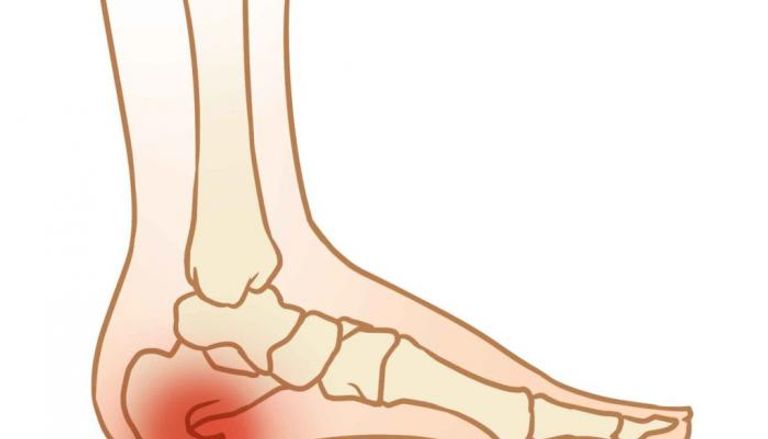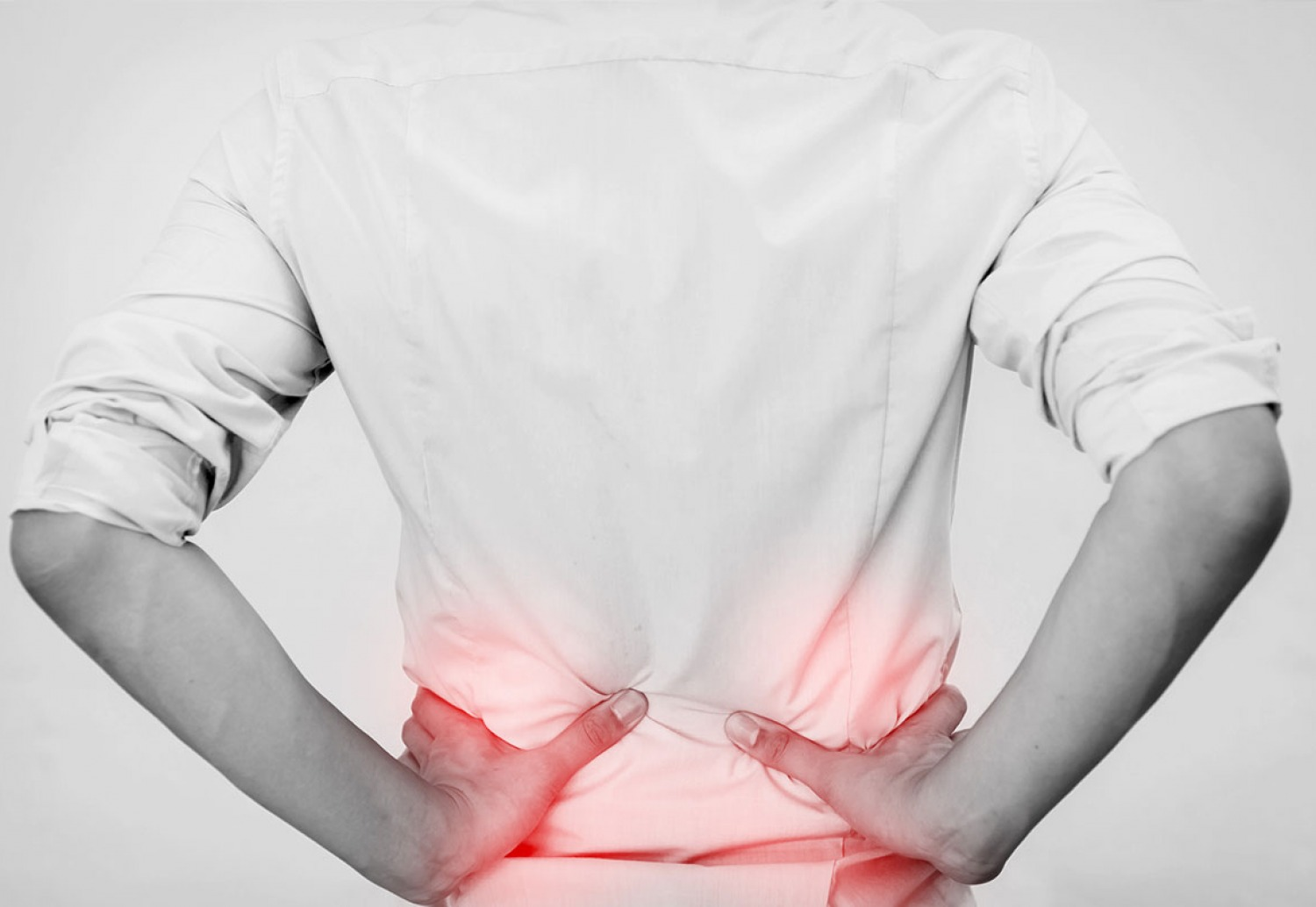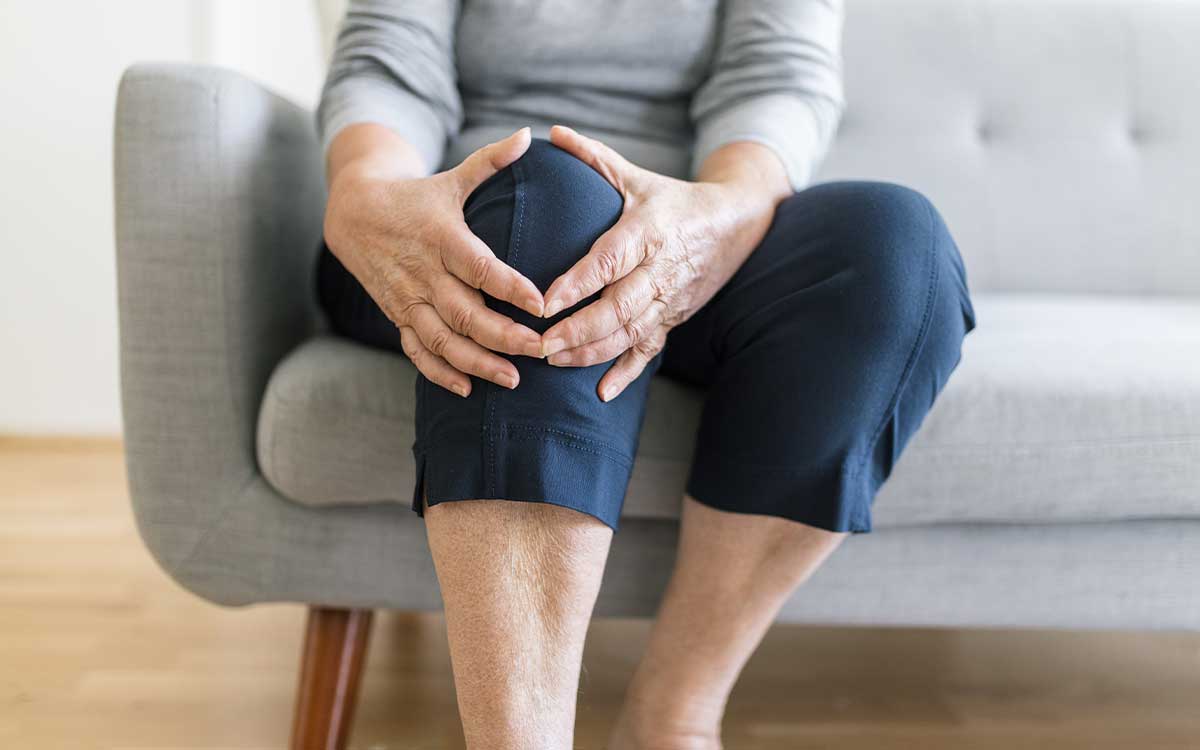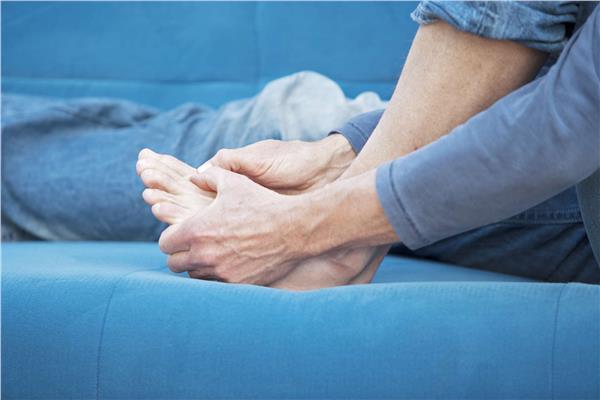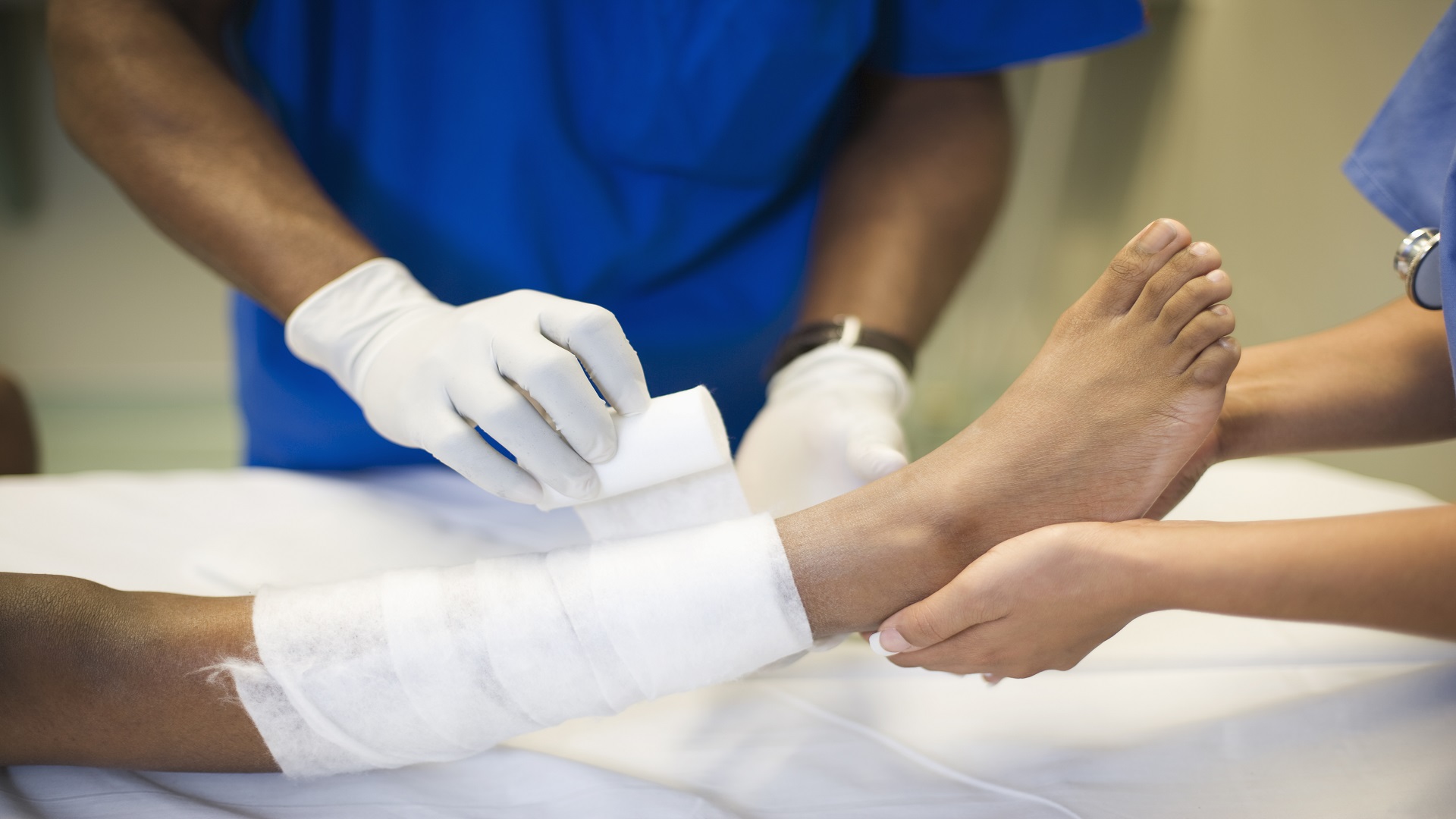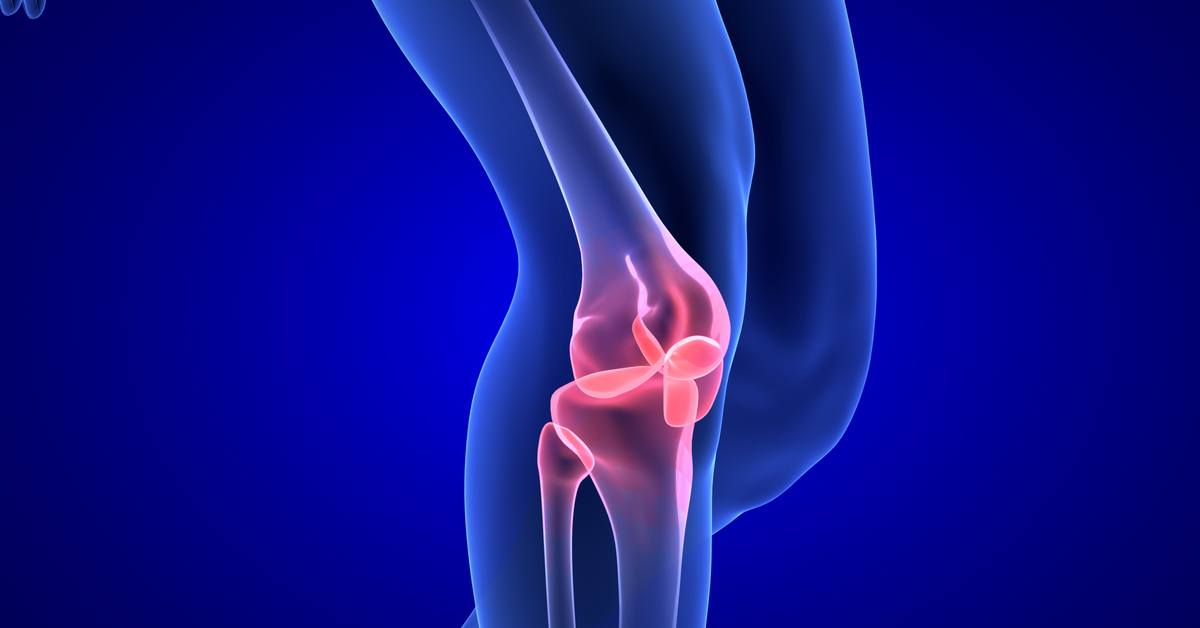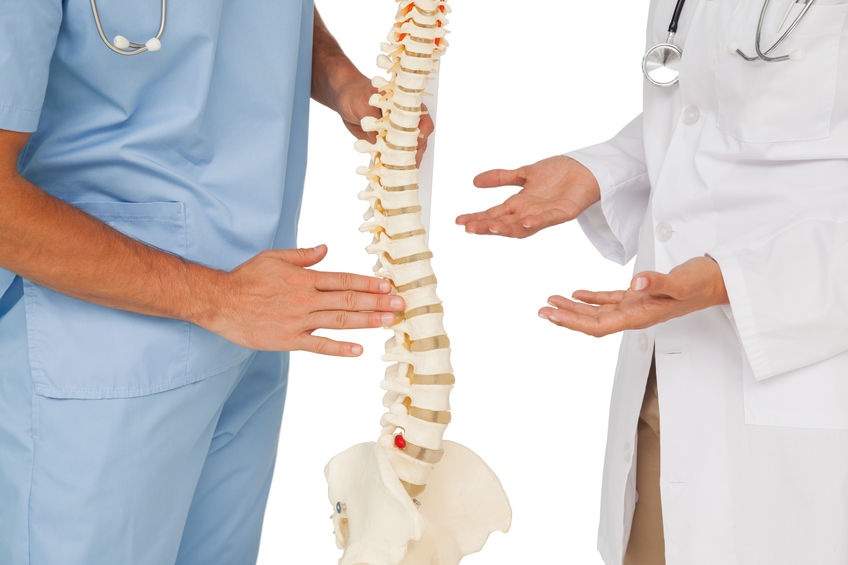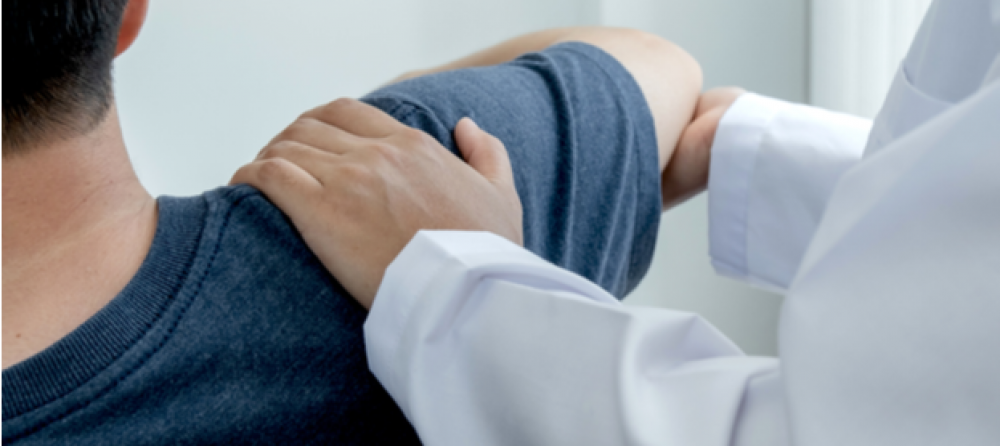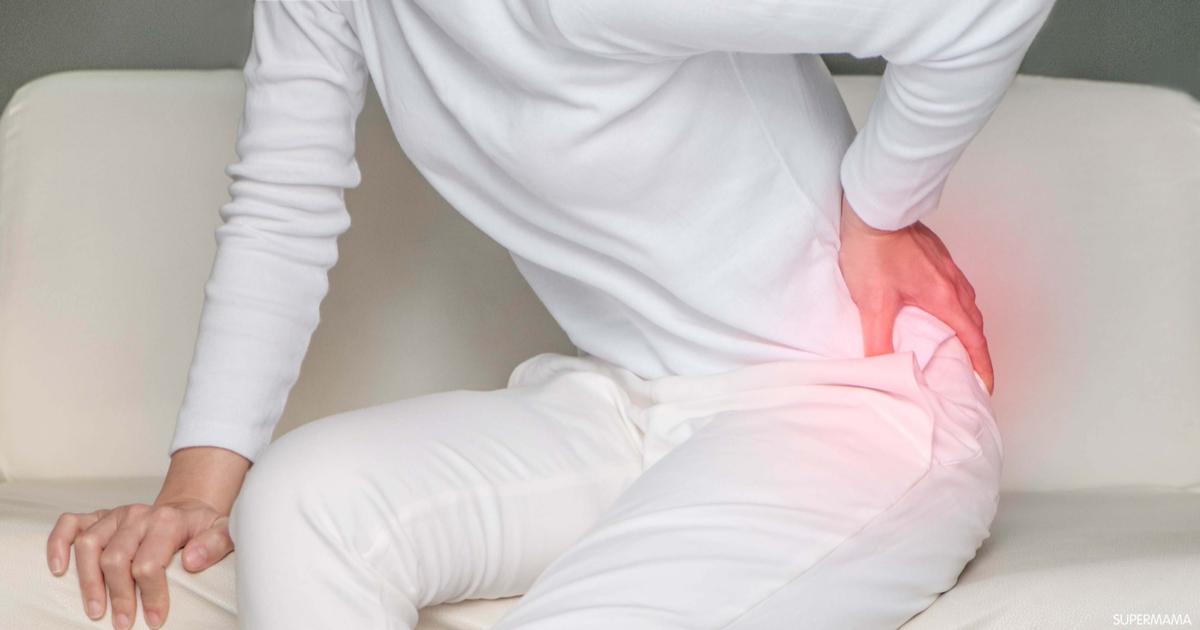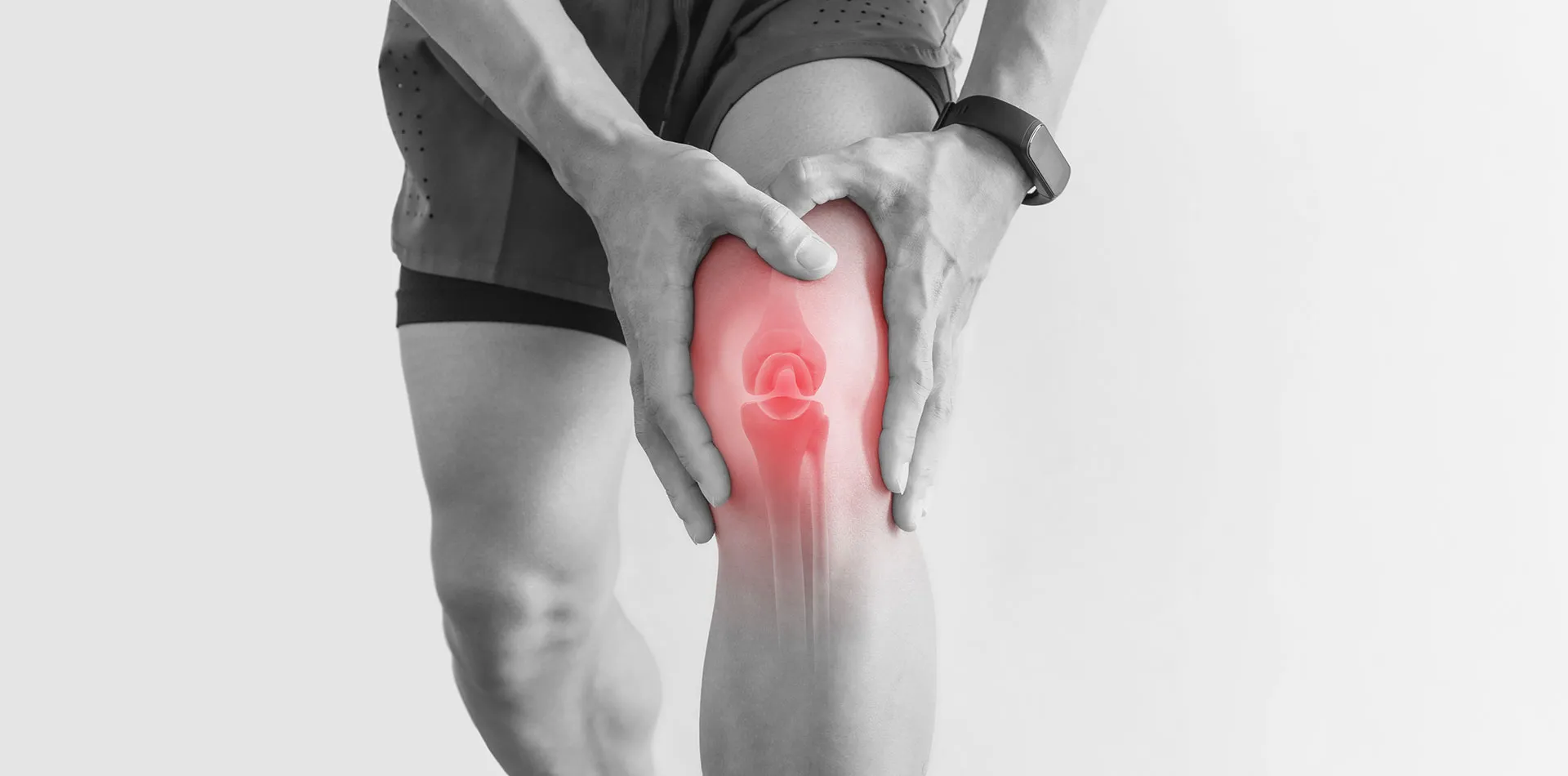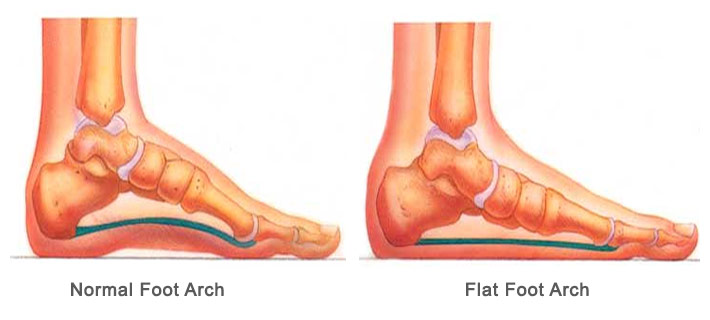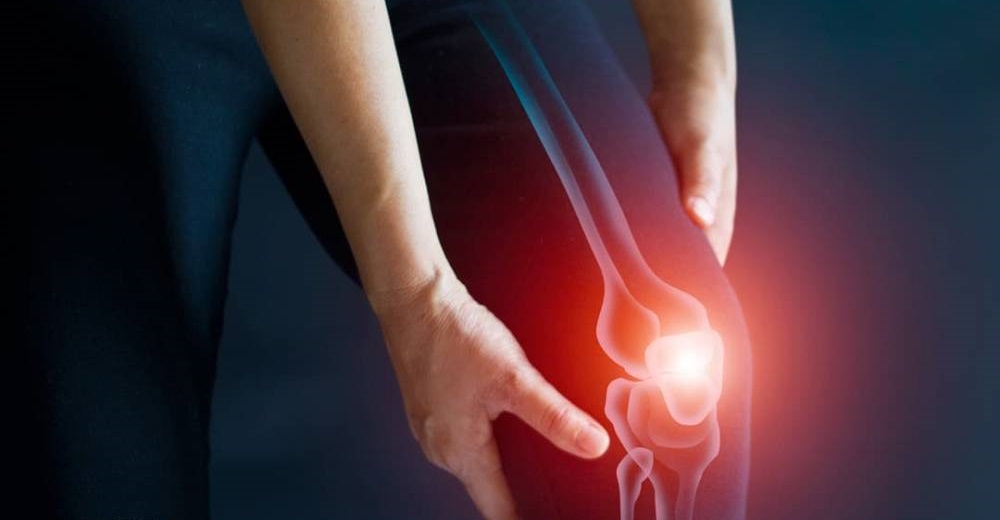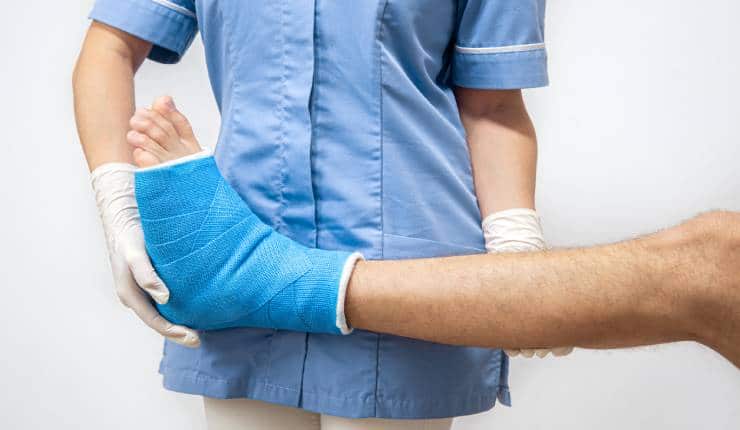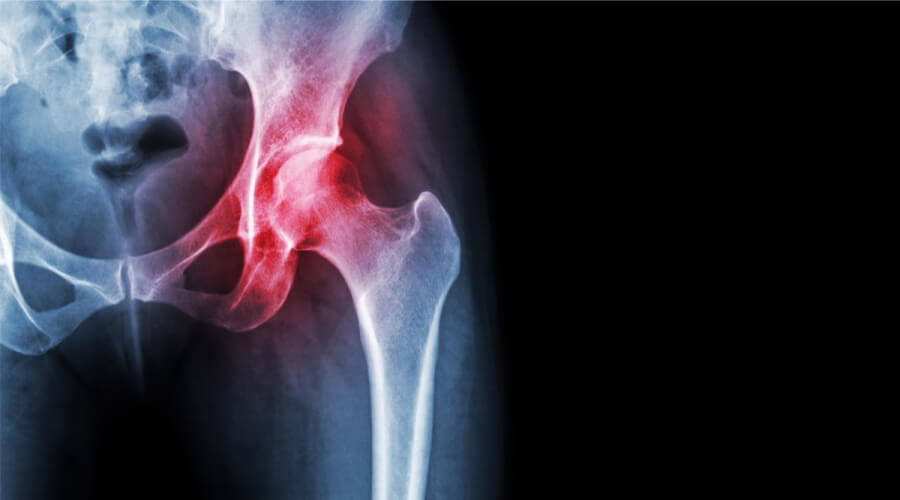!Complete Treatment for Heel Spurs and Key Prevention Methods
Permanent Treatment for Heel Spur There’s no doubt that heel spurs are annoying injuries that can cause severe pain, so many people want to get rid of this problem permanently. This is what we will clearly address in this article, which sheds light on the most important causes of heel spurs, their symptoms, and methods of diagnosis.
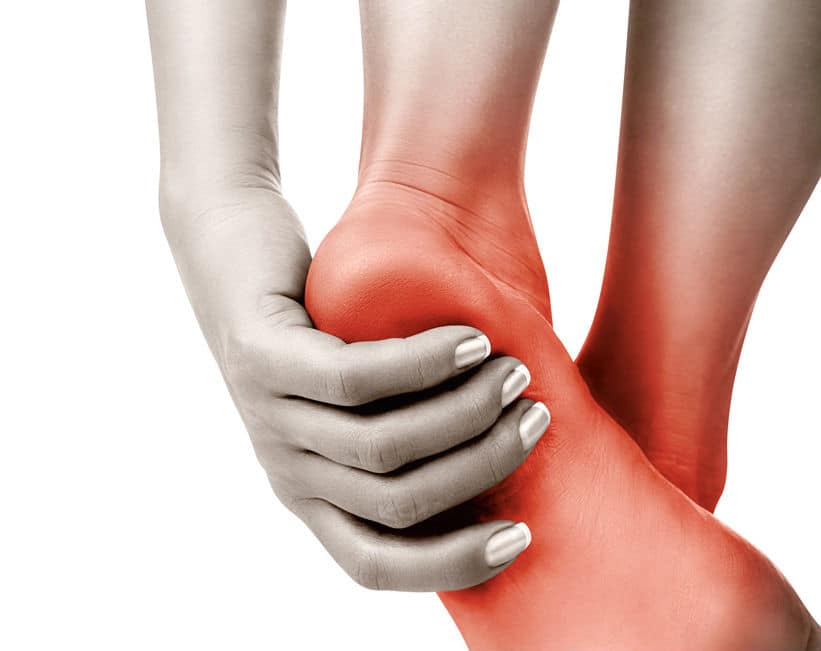
Permanent Treatment for Heel Spur
Heel spurs are a medical condition that can cause pain and deformity in the feet, and many people suffer from this problem. Fortunately, there are a number of steps that can be taken to permanently treat heel spurs, which will help alleviate pain and reduce deformities. In this article, we will review a list of medical guidelines that can be followed to get rid of heel spurs, which include the following:
- Using anti-inflammatory medications and reducing pressure on the feet: Anti-inflammatory medications such as non-steroidal anti-inflammatory drugs can help reduce the pain caused by heel spurs. The doctor may prescribe these medications to relieve symptoms and soothe the inflamed bones. They may also recommend applying ice packs to the inflamed area to relieve pain.
- Wearing appropriate shoes: Wearing inappropriate shoes, such as high heels, should be avoided, as these shoes can increase pressure on the heel spur area and increase pain. It is better to choose shoes with a flat, comfortable sole, and orthotic insoles or medical soles can also be used to provide the necessary support for your foot and distribute pressure properly.
- Exercising on hard surfaces: Exercising on hard surfaces like running or jumping on concrete floors can help strengthen the muscles and improve foot flexibility, which can alleviate pain and reduce deformities. It is recommended to perform exercises such as proper walking, stretching, and foot exercises under the supervision of a physical therapist.
- Healthy diets: Healthy diets are an important part of treating heel spurs. It is recommended to eat foods rich in calcium and vitamin D, such as dairy products, fatty fish, and broccoli, as this helps strengthen bones and maintain healthy feet.
What is a Heel Spur?
A heel spur is a condition that affects the heel and results from having a thorn or foreign object in the foot. This condition is characterized by severe pain that increases over time. Heel spurs can result from recently engaging in physical exercise on hard surfaces. This disorder occurs when an additional bony protrusion forms at the points where bones connect in the joints.
These protrusions are often found at the back or bottom of the heel and are also known as heel nails. Heel spurs can cause localized pain and swelling in the foot. If you are experiencing heel pain that persists for more than a month, you should consult a doctor. The doctor may recommend treatments such as stretching exercises and wearing medical shoes to relieve pain and swelling in the feet.
Resume your activity and movement with confidence with heel spur treatment by Dr. Amr Amal, an experience that goes beyond boundaries in treating foot problems.
Symptoms of Heel Spur
A heel spur is a condition characterized by the presence of an additional bony protrusion at the ends of bones, and it is common in areas where bones meet, such as joints. When a heel spur forms, it can cause pain in the affected area. If you are experiencing heel pain that has lasted for more than a month, it is important to consult your doctor for diagnosis and to begin appropriate treatment.
Here we will highlight the most significant symptoms associated with heel spurs and some steps that can be taken to address them:
- Heel pain: Heel pain is one of the most prominent symptoms associated with heel spurs. The heel spur causes irritation to the surrounding tissues in the area, leading to pain. The pain can range from mild to severe and may increase during physical activity or when standing for long periods.
- Swelling and redness: In addition to pain, heel spurs may be accompanied by swelling and redness in the affected area. This occurs due to the irritation and inflammation that occurs in the tissues surrounding the heel spur.
- Difficulty walking: Heel spurs may be accompanied by difficulty walking, especially when standing for long periods or during physical activity. The patient may feel unstable and uncomfortable while walking, which can affect their daily activities.
- Changes in the way of walking: Some patients with heel spurs experience changes in their gait, where they begin to put weight on the healthy side of the foot to reduce the pain associated with the heel spur in the affected heel.
- Worsening of symptoms over time: The symptoms associated with heel spurs may become more severe and have a greater impact over time if the necessary steps for diagnosis and treatment are not taken.

Causes of Heel Spur
If you are experiencing heel pain, you may have a condition known as a “heel spur”. It is a condition that affects many people and causes pain and tension in the foot. In this article, we will shed light on the known causes of heel spurs, which are the most common and include the following:
- Inflammation of the foot’s lining membrane:
Inflammation of the foot’s lining membrane is the main cause of heel spurs. This inflammation results from inflammation of the tendons and ligaments in the foot, which may be accompanied by inflammation of the bones, causing a painful swelling in the heel area, known as a heel spur. - Excessive calcium deposition:
Excessive calcium deposition in the foot occurs due to irritation of the tendons or ligaments, which can lead to the formation of a solid layer of calcium under the heel. This deposition is what is known as a “heel spur”, which causes heel pain when walking or standing for long periods. - Wearing inappropriate shoes:
Wearing inappropriate shoes can be one of the main factors that increase the likelihood of developing heel spurs. Wearing high-heeled shoes is not recommended, as it increases pressure on the heel, tendons, and ligaments. - Exercising on hard surfaces:
Engaging in physical exercises on hard surfaces like running or jumping on concrete floors can lead to increased friction between the foot and the ground, thereby increasing the likelihood of developing heel spurs. It is therefore better to wear suitable sports shoes and use shoe inserts to reduce pain and pressure on the heel. - Eating unhealthy foods:
An unhealthy lifestyle, such as consuming foods high in fat and sugar, is associated with an increased likelihood of developing inflammation in the body, including inflammation of the foot’s lining membrane and the formation of heel spurs. Therefore, it is best to follow a healthy and balanced diet that includes fruits, vegetables, and foods rich in calcium and vitamins.
Can Heel Spurs Go Away?
Heel spurs, or calcaneal spurs, are a common foot condition in which an additional bony protrusion forms on the bottom part of the heel bone. Although they appear on X-rays and are considered a distinctive sign of the condition, heel spurs are not the main cause of heel pain. Usually, the pain is a result of injury and degeneration of the fibers under the heel, which can be treated using stem cells and other innovative methods.
Therefore, removing the heel spur is not recommended at all. It is worth noting that some natural treatments may help treat heel spurs, such as using apple cider vinegar to dissolve the calcium deposits that form in the heel spur. You can get rid of annoying foot pain and enjoy pain-free steps with Dr. Amr Amal, a pioneer in treating heel spurs.
Heel Spur Surgery
Surgery is a procedure that is adopted to treat this condition. Heel spurs result from inflammation of the foot’s lining membrane, and some doctors attribute the cause to the deposition of calcium salts and inflammation in the origin of the plantar fascia. Heel spur surgery is now considered an unnecessary option and is used as a last resort after attempting available non-surgical treatments. Treatment for heel spurs without surgery includes several approaches, including increasing the activity of the muscles surrounding the foot and strengthening them through physical exercise, using functional therapy to improve flexibility and strengthen muscles, as well as using anti-inflammatory medications and applying temporary splints to relieve pressure on the spur.
Shockwave therapy for heel spurs is one of the treatments that achieves good results. This technique uses ultrasonic waves to stimulate healing and reduce inflammation in the affected area. Interestingly, this procedure takes only about 10 minutes and can lead to improvement in the patient’s condition and pain relief.
Tips After Heel Spur Removal Surgery
After undergoing heel spur removal surgery, the patient goes through a recovery period that requires special care to accelerate wound healing and return to normal daily life. In this article, we will review some important tips that should be followed to ensure proper recovery, including the following:
1. Rest and relaxation
After the surgery, the patient is advised to give their body complete rest and adequate relaxation to allow the wound to heal properly. The patient should avoid prolonged walking and standing for a period of time.
2. Follow the instructions of the attending physician
The patient should follow the instructions of the attending physician precisely. This may include taking prescribed medications and following the proper methods for cleaning the wound and changing dressings. Following the doctor’s instructions will ensure a speedy recovery and fewer complications.
3. Proper wound care
Check the wound regularly to ensure it is free of any signs of infection. Redness or swelling in the wound area may be a sign of infection. Contact the doctor if you notice any signs indicating an infection.
4. Perform medical exercises
The doctor may recommend some medical exercises to strengthen and stretch the muscles and ligaments surrounding the heel. These exercises will help restore the strength and normal movement of the foot after surgery.
5. Wear appropriate shoes
When returning to daily activities, the patient should wear appropriate shoes that provide support and comfort for the foot. High-heeled shoes should be avoided during the recovery period.
6. Attend follow-up visits
The patient should attend follow-up visits with the doctor as scheduled. The doctor will assess the progress, evaluate the recovery, and provide any additional guidance for rest and complete recovery.
Remember that each case may be different and require specialized care, so it is important to consult the doctor if there are any specific instructions for your case. Following these tips will help you accelerate the recovery process and return to normal life quickly.
Tips for Preventing Heel Spur Injuries
Heel spur removal surgery is an important surgical procedure for treating medical conditions related to this bone in the body. After undergoing the surgery, there are several important tips that should be followed to achieve rapid healing and successful recovery. Here are some tips:
- Get enough rest and sleep:
After surgery, your body needs rest and adequate sleep to recover. It is important to listen and respond to your body’s needs and allocate enough time for rest and relaxation. - Use a hand splint:
If needed, it is recommended to wear a hand splint or sling after surgery. This can help reduce pressure on the treated area and reduce pain. - Avoid bathing and using wet items:
It is preferable to avoid bathing and using wet items around the affected area. Instead, a towel and medical soap can be used to clean the areas around the wound. - Consume fiber:
Digestive issues such as constipation may occur after surgery. To minimize this problem, it is recommended to take fiber supplements after surgery to promote bowel movement. - Healthy nutrition:
After surgery, it is important to consume light, soft, and easily digestible meals. It is best to avoid solid foods that may cause constipation or require difficult chewing. It is advisable to consult a nutritionist for more specific advice.
Can Heel Spurs Heal?
Healing from heel spurs is possible, and the affected person can permanently get rid of their pain. This requires adhering to the best treatment methods, which include rest and the use of some pain medications. Surgical treatment may be resorted to in severe cases that do not respond to common medical treatment.
It is important to note that the success rate of heel spur surgery ranges from 70 to 90 percent. Additionally, cold packs can be used to reduce the inflammation associated with this condition. The affected person should consult a specialist doctor to assess their condition and recommend appropriate treatment. Remember that Dr. Amr Amal offers innovative solutions for treating heel spurs, allowing you to regain your fitness and vitality without surgery.
Best Doctor for Treating Heel Spurs in Egypt
In Egypt, many people suffer from heel spur pain in their feet, a condition that causes severe pain and limits their ability to walk and move normally. Among the doctors specializing in treating this condition, the name Dr. Amr Amal stands out as the best choice for patients suffering from heel spur pain.
Dr. Amr Amal is one of the most prominent doctors specializing in orthopedics and surgical operations in Egypt. Dr. Amr has extensive experience in treating heel spur pain and is fully aware of the best ways to get rid of this condition. In addition to his expertise in clinical work, Dr. Amr Amal also serves as a faculty member at Ain Shams University in Egypt. As a consultant for orthopedic and joint surgery at the same university, he provides patients with a high level of experience and accuracy in treatment.
Dr. Amr Amal relies on the latest surgical techniques to treat heel spurs and achieve rapid recovery. The doctor is committed to accurate diagnosis and providing comprehensive treatment for patients, contributing to improving their quality of life and enabling them to return to their normal movement. Thanks to his accomplished professional history and dedication to providing the best quality care for patients, Dr. Amr Amal enjoys a good reputation and a large base of satisfied patients. He always strives to meet the needs of his patients and provide them with appropriate medical consultations.
Dr. Amr Amal has also contributed his expertise in spinal surgery and the insertion of pedicle screws, making him a comprehensive physician capable of providing treatment and care for a wide range of orthopedic and surgical conditions. It can be said with confidence that Dr. Amr Amal is the optimal choice for patients seeking comprehensive and effective treatment for heel spur pain in Egypt. Dr. Amr is distinguished by his professional experience, accuracy in diagnosis and treatment, and is rightly considered one of the best doctors in the field of orthopedics in the country.
